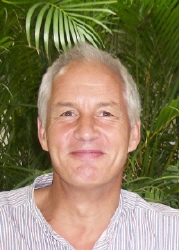|
Medicial Mistakes?
How many people each year suffer some type of preventable harm that contributes to their death after a hospital visit?
|
|
| | NCCAM Research Spending 2005-2007 by Modality: What are the Big 3? Any Surprises? | |
Summary: Integrator reader and sometimes commentarist Taylor Walsh recently asked staff at the NIH National Center for Complementary and Alternative Medicine for data on the specific amounts of grant awards for specific modalities in fiscal years 2005-2007. Walsh, the founder and CEO of Washington, D.C.-based Life Pages, shared the data with the Integrator. What do you suppose are the top 3 modalities in terms of funding? What is the percentage of NCCAM's $362-million in those years which was spent on the top three? How does this meet your sense of priorities?
 NIH NCCAM
__________________________________
NIH NCCAM Total Dollars Granted for Selected Modalities
FY 2005-2007
- from information provided by Taylor Walsh, Life Pages
| Modality |
|
Amount |
|
Percent*
|
Acupuncture
|
|
$31,180,080
|
|
8.5% |
| Aromatherapy |
|
$186,875
|
|
0.05% |
| Ayurvedic
Medicine |
|
$1,582,975
|
|
0.4% |
| Chelation |
|
$1,529,447
|
|
0.4% |
| Healing touch |
|
$1,866,937
|
|
0.5% |
| Herbs/Botanicals |
|
$99,913,254
|
|
27.2% |
| Homeopathy |
|
$2,203,656
|
|
0.6% |
| Massage |
|
$5,132,633
|
|
1.4% |
| Meditation |
|
$8,303,160
|
|
2.3% |
| Oxygen Therapy |
|
$386,808
|
|
0.1% |
| Reiki |
|
$570,299
|
|
0.2% |
| Yoga |
|
$7,743,906 |
|
2.1% |
(*) Based on $362 million for FY 2005-2007.
All data on amounts were provided to Walsh by NIH NCCAM.
__________________________________
Comment: These modalities only account for roughly 44% of the NCCAM dollars. I have subsequently asked for a couple more data points, namely for manipulative therapies/chiropractic and for dietary supplements, as well as for any other major category that may be overlooked. (Education-related grants? Surveys?) According to these data, herbs/botanicals represent as much as 60% of the total modality-focused research expenditures. The top three listed here are herbs/botanicals, acupuncture and meditation. These account for 86% of the modality-oriented research dollars noted in this chart.
 James Gordon, MD - a comment on herb research
"I don’t want to see the tax-payer dollar subsidizing mechanism research
so that some pharmaceutical company can make a bundle off of what is
learned. They can fund that. This has certainly got to be a principle
in NCCAM’s research ...
"I think 20%-25% of the budget should be devoted to [broader integrative/non-reductive research]. NCCAM should
be a leader here and NCCAM should be setting the agenda. We need to be
looking at comprehensive treatment, not just in 'CAM' or 'integrative
medicine.' NCCAM should also be looking at cost effectiveness and on
wellness research."
I was also reminded of comments made by Richard Nahin, PhD, MPH, NCCAM senior adviser and acting director of extramural research during his October 14, 2008 keynote at the recent Institute for Health and Productivity Management conference that he keynoted. Nahin told the assembled employers, gathered to explore health, wellness and productivity strategies, that new NCCAM director Josephine Briggs, MD, is planning to focus more NCCAM research dollars on effectiveness research. Excellent to hear! More on this soon.
| Resumes are useful in employment decisions. I provide this background so that you may understand what informs the work which you may employ in your own. I have been involved as an organizer-writer in the emerging fields......more |  |
|
|
Popular Related Articles/Areas
Popular & Related Products
Popular & Featured Events
Dimensions of Wellness
|
|
|